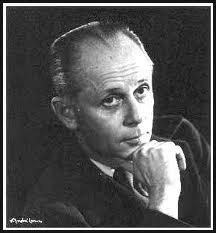We hear the word “stress” all the time, but where did it come from?
KEY POINTS
- The term “stress” emerged out of the field of engineering to describe the actual physical strain put on a structure, but has now been broadened.
- Selye (1936) discovered that after a rat was exposed to a stressor, a typical “syndrome” appeared which was not related to the physical damage.
- The stress response proposed by Selye (1976) suggested that three interdependent elements accompanied any specific stressor.
The notion of “stress” is ingrained in both academic and public discourse, creating a popular phenomenological term that is rarely defined. As accurately noted by Selye (1976), the founder of the term as we know it today, “everybody knows what stress is and nobody knows what it is” (p. 692).
The term “stress” emerged out of the field of engineering to describe the actual physical strain put on a structure. In the mid-1930s, however, the paper “A Syndrome Produced by Diverse Nocuous Agents” was published in Nature (Selye, 1936), which discussed experiments on rats who were given “acute non-specific nocuous agents,” or, “stressors,” which included exposure to cold, surgical injury, spinal shock, excessive muscular exercise, or sub-lethal drug administration.
 Selye’s discovery
Selye’s discovery
In his investigation, Selye (1936) discovered that after a rat was exposed to a stressor, a typical “syndrome” appeared which was not related to the physical damage done by the stressor. Selye noted that regardless of the type of stressor to which the rats were exposed, two stages emerged after exposure: In the first stage, 6-48 hours after the initial injury, amongst a myriad of symptoms, rats experienced a notable decrease in size of the thymus (the organ responsible for producing T cells, critical to immunity strategies). In the second stage, beginning at 48 hours after the initial injury, it seemed the brain structures responsible for the production of the organism’s growth ceased to function in favor of other structures which would be more greatly needed, economizing the body’s resources. Selye’s work would be seminal in exploring the biomarkers of stress and provide a catalyst for stress research in general.
Emerging from this study, the stress response proposed by Selye (1976) suggested that three interdependent elements accompanied any specific stressor. These were: hypertrophy in the adrenal cortex (essentially an enlargement in the structure of the brain which stimulates androgen glucocorticoid production), atrophy in the lymphatic system (responsible for the defense of the immune system), and gastrointestinal ulcers.
The GAS model
In noting the abundant health issues derived from “stress,” Selye (1976; 1980) developed the General Adaptation Syndrome (GAS) model, which suggested that the odd behavioral and physiological reactions to stress are caused by disrupting homeostasis, the body’s natural balance. The GAS model accounts for three distinct phases that activate when one is under stress: the alarm reaction (made up of the “shock” and “anti-shock” phase), resistance stage, and exhaustion stage.
Within homeostasis, the body adapts to minor stressors, however when a stressor exceeds the amount of adaptation given in homeostasis, the body enters into the shock phase of the first stage, alarm, where cells in the hypothalamus begin to activate, the sympathetic nervous system (which regulates the body’s “sympathico- adrenal system,” otherwise known as the “fight or flight” response) is suppressed.
However, in the “anti-shock” phase, when the stressor persists, the sympathetic nervous system is activated, and the “fight or flight” reaction occurs in an attempt to best mobilize the body’s resources in case of danger. This occurs through the activation of the hypothalamic-pituitary-adrenalcortical (HPA) axis.
Original post Psychology Today

 Selye’s discovery
Selye’s discovery




